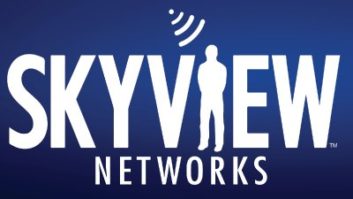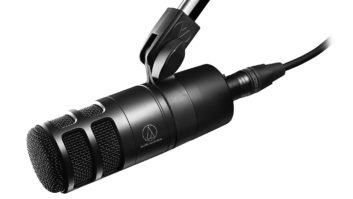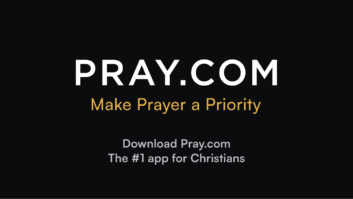The podcast is at the intersection of spoken word and radio. This form of media — relatively new, yet already enjoying a “resurgence” in public awareness — combines the immediacy and ubiquity of electronic media with the tradition of spoken word material in prerecorded formats.
A new initiative from CBS aims at making access to podcasts easier for listeners.
“The interest in on-demand audio content is huge,” says Ezra Kucharz, president of CBS Local Digital Media. “With the release of Play.it, we aim to bring consumers a unified, easy-to-use platform featuring the best podcasts.”


The Play.it homepage offers a highly visual representation of popular podcast offerings. The app’s homepage, shown here on an iPhone 6, is much more streamlined
Play.it underwent an 11-month gestation period from concept to launch. As Kucharz recalls, it was a busy time. “We looked at the audio-on-demand landscape and discovered that there were a number of music services, but very little for the spoken word.”
TAKING CUES FROM YOUTUBE
CBS decided to pursue this segment and use a delivery platform similar to YouTube. “As we begin, the content will be delivered over the Internet in a format that any Web-enabled device will be able to utilize it.” He adds that an app will be available during the second quarter.
Play.it is available online at www.play.it and through a mobile-optimized site for steaming across devices. Podcasts are available to stream or download, and Play.it content is available across CBS Local Digital Media’s properties — including Radio.com, the Radio.com app, CBS Local sites nationwide and the CBS Local app. They are also distributed across TuneIn’s site and apps, as well as on iTunes. The Play.it podcast network will also be available on CBS Radio’s HD radio stations in select major markets in the coming months.
CONTENT
Play.it launched Jan.7, and the content is divided into several major categories, including News & Information, Sports, Entertainment & Lifestyle, Comedy, Health & Wellness, Business, Society & Culture and content from CBS Radio programs.
Content for Play.it comes from a number of sources. “First and foremost is the on-air talent from the 117 CBS radio stations,” said Kucharz.
Podcasts from CBS Radio talent include WCBS’s “CEO Radio with Ray Hoffman,” WFAN’s “The Mike Francesa Show” and KAMP’s “Mornings with Carson Daly.”
“Play.it enables us to extend the CBS Radio brand into the on-demand space,” he adds. Beyond that, the new venture sought out original programming.
“There’s a huge pool of talent out there waiting to be discovered,” said Kucharz. Some of these individuals have had their own podcasts; others are new to the concept.

The Boomer & Carlton podcast page is shown on the mobile app. Here users can subscribe to a podcast, select past episodes or interact via social media. “Our team reached out to people we thought would be interesting podcasters, and we’ve also been approached by people who want to have a podcast on Play.it.” Kucharz adds that there’s about a 50/50 ratio between these two groups. The search for new talent is ongoing, and there are plans to add new podcasts on a weekly basis.
One of the new talents showcased on Play.it is Jeffrey Hazlett, former CEO of Kodak. A recent podcast of “All Business” featured an interview with former Kiss front man Gene Simmons.
Another, “Define Your Life,” with fitness trainer Shaun T, shares uplifting stories of overcoming hardship through fitness, family, nutrition, fashion and fun.
New talent are coached in the fundamentals of podcasting. They then create pilot shows before going live. There are no hard and fast rules regarding length of podcasts, but most run between 45 minutes to an hour and are produced weekly.
No matter the source or topic, Kucharz notes that there are some elements common to all good podcasts.
“Most important, is the host engaging? Is he or she someone that the audience can identify with?” Beyond that, there are several models that work well. “The host can talk one-on-one with a subject matter expert, or engage a number of guests in a discussion format.”
An important difference between live radio and recorded podcasts is the level of interactivity, and Kucharz notes that is something that hosts need to be aware of. Although podcasts are not interactive, listeners are still able to engage with the hosts through social media. Questions or comments that are posted may be addressed by the host on the next podcast.
Play.it podcasts will include advertising, and Kucharz explains how that dimension was explored during the planning phases of the project. “We asked potential advertisers what they would need to participate, and the biggest response was the ability to measure audience metrics instantly. That is something we already do with streaming audio, and was easily ported on to the podcasts.”
Play.it uses ad insertion technology as well as native and sponsorship advertising. Brands will be able to buy campaigns across platforms in a simple one-stop-shop manner including over-the-air, live streaming and podcasts. Additionally, brands will be able to deliver targeted messaging to specific fans of a particular show or across the entire network of hundreds of programs. Kurcharz adds that advertising time will be available through programmatics, but the bulk of the advertising will be sold by a direct sales team.
Most of the work to roll out this new venture has been predictable, but Kucharz notes that there have been a few surprises. “Some of the advertisers have reached out to us and express an interest in doing their own lifestyle podcasts related to their brands. This type of content has been up on YouTube for a while, but doing it in an audio-only format is fresh territory.”
Tom Vernon is a longtime Radio World contributor.












